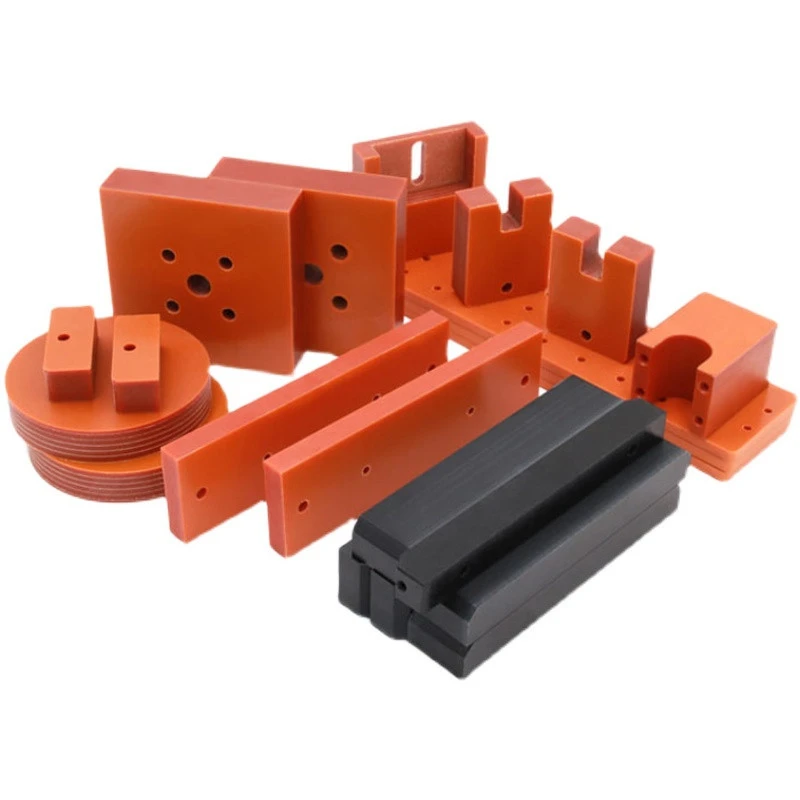The Origins and Composition of Bakelite Sheet
The Invention of Bakelite
Bakelite, the world's first synthetic plastic, revolutionized the materials industry when it was invented by Belgian-American chemist Leo Baekeland in 1907. This groundbreaking discovery paved the way for the development of numerous synthetic materials that we rely on today. Baekeland's invention was driven by the need for a synthetic alternative to shellac, a natural resin used in electrical insulation. The resulting material, Bakelite, proved to be far superior to its natural counterparts in terms of durability, heat resistance, and electrical insulation properties.
Chemical Composition
Bakelite board is composed of phenol-formaldehyde resin, a type of thermosetting plastic. The chemical reaction between phenol and formaldehyde creates a cross-linked polymer structure that gives Bakelite its unique properties. This molecular structure is responsible for the material's high strength, heat resistance, and excellent electrical insulation characteristics. The addition of fillers and reinforcing materials during the manufacturing process can further enhance specific properties of the Bakelite board, tailoring it to various applications.
Types of Bakelite Sheets
Bakelite sheets are available in several grades and variations, each designed to meet specific industry requirements. Common types include paper-based phenolic sheets, which offer good machinability and electrical insulation, and canvas-based phenolic sheets, known for their superior mechanical strength and impact resistance. Glass-reinforced phenolic sheets provide enhanced thermal and electrical properties, making them suitable for high-performance applications. The diversity in Bakelite sheet types allows manufacturers to select the most appropriate material for their specific needs, ensuring optimal performance across various industries.
The Manufacturing Process of Bakelite Sheet
Raw Material Preparation
The production of Bakelite sheet begins with the careful preparation of raw materials. High-quality phenol and formaldehyde are combined under controlled conditions to form a liquid resin. This resin serves as the base material for the Bakelite sheet. Additives, fillers, and reinforcing materials are then incorporated into the resin mixture to enhance specific properties of the final product. The precise formulation of these ingredients is crucial in determining the characteristics of the Bakelite sheet, such as its strength, heat resistance, and electrical insulation capabilities.
Molding and Compression
Once the resin mixture is prepared, it undergoes a molding process to form the Bakelite sheet or Bakelite board. The liquid resin is poured into molds or applied to reinforcing materials such as paper or fabric. The material is then subjected to high pressure and temperature in hydraulic presses. This compression molding process causes the resin to cure and harden, forming the characteristic cross-linked polymer structure of Bakelite. The molding stage is critical in achieving the desired thickness, density, and surface finish of the Bakelite sheet or Bakelite board.
Curing and Post-Processing
After the initial molding, the Bakelite sheets undergo a curing process to complete the polymerization reaction and achieve their final properties. This curing stage typically involves exposing the sheets to elevated temperatures for a specified period. Once cured, the Bakelite sheets may undergo additional post-processing steps such as trimming, cutting, or surface finishing to meet specific dimensional and aesthetic requirements. Quality control measures are implemented throughout the manufacturing process to ensure consistency and adherence to industry standards, resulting in high-quality Bakelite sheets ready for various applications.
Applications and Advantages of Bakelite Sheet
Industrial Applications
Bakelite sheet or Bakelite board finds extensive use in numerous industrial applications due to its exceptional properties. In the electrical industry, it serves as an excellent insulating material for switchgears, circuit boards, and transformer components. The automotive sector utilizes Bakelite sheets or Bakelite boards in the production of various parts, including gaskets, bearings, and under-hood components, benefiting from its heat resistance and dimensional stability. In the aerospace industry, Bakelite sheets or Bakelite boards are employed in the manufacturing of lightweight yet durable interior components. The material's versatility extends to the chemical industry, where its chemical resistance makes it ideal for lining tanks and pipes handling corrosive substances.
Mechanical Properties
The mechanical properties of Bakelite sheet contribute significantly to its widespread adoption in manufacturing. Its high compressive strength allows it to withstand substantial loads without deformation, making it suitable for structural components in machinery. The material's low coefficient of thermal expansion ensures dimensional stability across a wide range of temperatures, crucial for precision engineering applications. Bakelite sheets also exhibit excellent wear resistance and low friction properties, making them ideal for bearing surfaces and other high-wear applications. These mechanical attributes, combined with the material's lightweight nature, make Bakelite sheet a preferred choice in various engineering disciplines.
Environmental Considerations
While Bakelite sheet offers numerous advantages, it's essential to consider its environmental impact. As a thermosetting plastic, Bakelite is not easily recyclable through conventional methods. However, ongoing research is exploring innovative recycling techniques to address this limitation. The durability and long lifespan of Bakelite products contribute to resource conservation by reducing the need for frequent replacements. Additionally, the manufacturing process of Bakelite sheets has seen improvements in energy efficiency and emissions reduction over the years. As sustainability becomes increasingly important, the industry continues to investigate eco-friendly alternatives and improved end-of-life management strategies for Bakelite products.
Conclusion
Bakelite sheet stands as a testament to the ingenuity of early 20th-century materials science, continuing to play a crucial role in modern industry. Its unique combination of electrical insulation, heat resistance, and mechanical strength makes it an indispensable material in various applications. From electrical components to industrial machinery, Bakelite sheet's versatility and reliability have ensured its relevance for over a century. As technology advances, the applications for this remarkable material continue to evolve, showcasing its enduring value in the face of newer alternatives. The ongoing research into improved manufacturing processes and potential recycling methods promises to enhance the sustainability of Bakelite sheet, securing its place in future industrial landscapes.
Contact Us
For more information about our high-quality Bakelite sheets and how they can benefit your projects, please don't hesitate to contact us at info@jhd-material.com. Our team of experts is ready to assist you in finding the perfect Bakelite solution for your specific needs.






